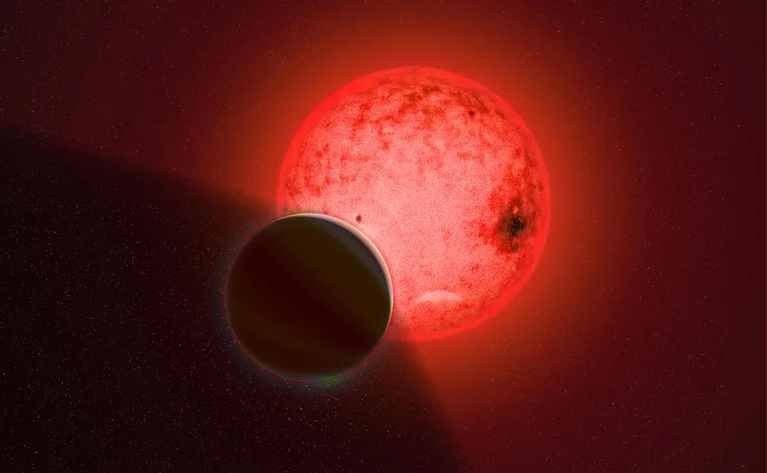The star TOI-5205 is about four times the size of Jupiter, yet a planet the size of Jupiter orbits it.
A research team led by Shubham Kanodia (Carnegie Endowment) has discovered an unusual planetary system in which a gas giant orbits a small red dwarf star. Search results have been provided by The Astronomical Journal Published in the journal
M dwarf stars are smaller and cooler than the Sun, and are among the most common stars in the Milky Way. They are smaller and about half the temperature of the Sun, so they are much redder. Its luster is low, but its lifespan is extremely long. Although red dwarfs have more planets on average than other types of massive stars, the characteristics of their composition make it unlikely that they will host a gas giant.
The recently discovered celestial body TOI-5205b was first identified as a candidate exoplanet by NASA’s TESS Space Telescope. Kanodia’s research team confirmed it to be a planet and determined its characteristics using ground-based instruments.
“The star TOI-5205 is four times the size of Jupiter, yet it has somehow managed to create a planet the size of Jupiter, which is really impressive!” – said Kanodia, whose area of expertise is this type of star that makes up three-quarters of our galaxy and cannot be seen with the naked eye.
So far, few gas giants have been found orbiting M-type dwarf stars. This is the first sample to be discovered in a planetary system around a low-mass M dwarf such as TOI-5205. By comparison, a Jupiter-sized planet orbiting a sun-like star is like a pea orbiting a grapefruit. In the case of TOI-5205b, because its star is much smaller than the Sun, it’s like a pea about a lemon. In fact, when TOI-5205b Jupiter apparently passes in front of its star, it blocks nearly 7 percent of its light—one of the most striking exoplanet occultation events known.

Planets are born in disks of gas and dust that orbit young stars. According to the most accepted theory, for the formation of gaseous planets, about ten land masses of rock must gather together, and this forms the core, which absorbs a large amount of gas from the disk, thus forming the giant gas that we see today. The time frame in which this occurs is crucial.
“The mere existence of TOI-5205b tells us a lot about the disks in which these planets were born.” Kanodia explained. “If initially there wasn’t enough rocky material in the disk to form a core, then the gas giant wouldn’t form. And eventually, if the disk dissipated before the core formed, it wouldn’t have formed. TOI-2505b would still have been able to evolve. Based on our knowledge of planet formation, TOI-2505b cannot exist.
Researchers have shown that the planet’s deep transit makes it suitable for observations, using the new Webb space telescope to study its atmosphere and learn more about its composition.
source: Carnegie Science
comment












































